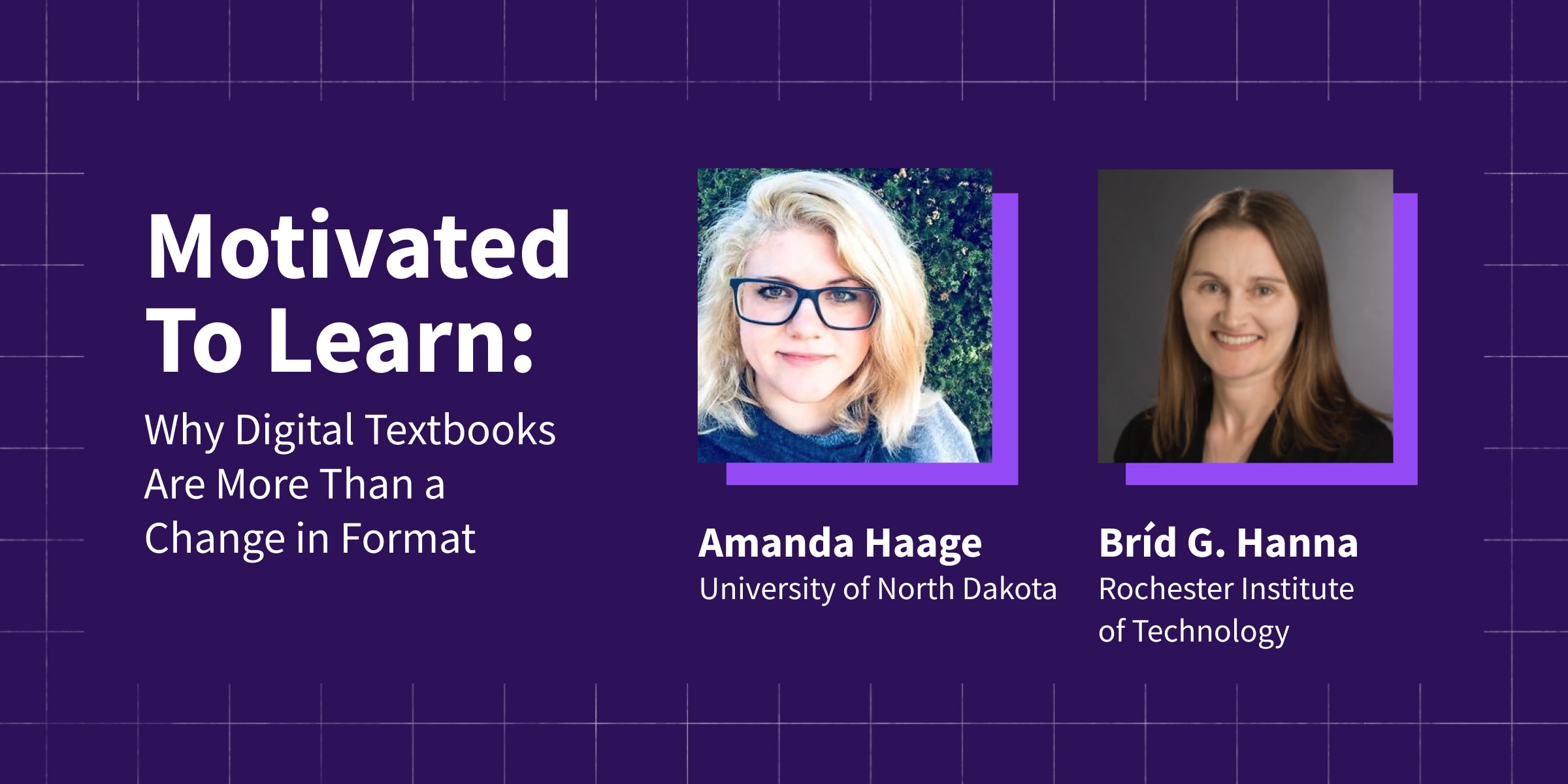It’s part of Generation Z’s DNA: digital is more enticing than print. Seven out of ten teenage Gen Z members watch over three hours of mobile video every day.1 More alarming, one in three haven’t read a book for pleasure in the last 12 months.2 As an educator, how do you help students warm up to the idea of course readings? The answer: interactive, digital textbooks.
At our recent virtual event (view the recording here), two professors reflected on how they use customizable and media-rich Top Hat textbooks to keep students motivated and build community through discussions. Here are the key takeaways.
Why the shift from print to digital is long overdue
It’s critical to match your course text to the needs of your students. Unfortunately, traditional print textbooks don’t always cut it. “Most professors settle for a text that is close enough to where they want to go—only about 70 percent of the way there,” shares Donna Battista, VP of Content at Top Hat. However, as two innovative professors found, the Top Hat Catalog—filled with hundreds of interactive titles—puts students at the center of the course experience. “With Top Hat, we really allow instructors to match the courseware to their class and not have to match their class to the courseware,” Battista continued.
1. Customize your book to meet your learning objectives
Amanda Haage is an Assistant Professor of Biomedical Sciences at the University of North Dakota. Haage teaches 350 students and uses Top Hat’s Anatomy and Physiology in her asynchronous classes. She uses what she calls a ‘badge progression model,’ rewarding students with badges for completing milestones such as finishing a chapter or completing a set of questions. Haage customizes the section introductions of her Top Hat book to correspond to a badge, helping students understand what skill level they’re working towards. “It’s a nice way for students to move through the content and see the connections you want them to see,” Haage says.
Bríd G. Hanna is an Associate Professor in the Department of Economics at the Rochester Institute of Technology. Hanna teaches 80 students in a primarily synchronous but blended format. She adopted Top Hat’s Principles of Microeconomics and greatly appreciates the ability to embed her own questions throughout. “I’ve made the textbook my own. I chose to emphasize certain chapters so students know what’s examinable,” she says.
2. Bring your content to life with interactive elements
As Haage found, 3D simulations are an invaluable tool to illustrate how our bodies function. The benefits for students are two-fold: they get an immersive, media-rich learning experience, and they don’t have to buy additional software for activities or problem sets. “I found it super helpful for students to have a package that’s cheaper than most A&P textbooks. They get both things: the active learning piece with embedded questions and the 3D modelling software. That’s what pushed me to choose the Top Hat textbook and build my new courses around it,” Haage says.
“They get both things: the active learning piece with embedded questions and the 3D modelling software. That’s what pushed me to choose the Top Hat textbook.”
For Hanna, the questions in her Top Hat textbook form the foundation of live classes. She has adopted a flipped model, where students are expected to come to class having completed their reading—and be prepared to engage in classroom exercises. Interactive question types such as click-on-target allow students to quiz themselves informally, while Hanna uses this data to dispel misconceptions. “I try to get to the questions as quickly as possible because that’s how economics students learn: by thinking on their own,” she says.
3. Use student insights to create an engaged community
Allow students to digest readings on their own, as Haage does in her course. She uses Top Hat Community to split students into teams of five and then poses daily questions related to the assigned readings. In a self-paced learning environment, this has been a valuable way to get students interacting in small groups and with Haage.
With plenty of textbook and in-class questions posed by Hanna, she benefits from an aggregated view of student performance. “The Top Hat reports that I receive indicate which students are doing well and what questions are tripping students up. This really drives what I do in the classroom,” she says. Students also benefit from accessing real-time insights on how they’re performing in class. “I strongly believe that having students pose their response and then get almost immediate feedback on why their response was or wasn’t correct helps cement those concepts,” Hanna reflects.
Learn how interactive textbooks can be part of your complete teaching toolkit. Click here to get started.
References
- Ryan, T. (2020, January 16). How Gen Z and Millennials Watch Video Content & What That Means for Production Teams. Rev. https://www.rev.com/blog/how-gen-z-and-millennials-consume-video-content-what-that-means-for-production-teams
- Does Gen Z Read Books? Answering 4 Big Questions About the Generation. (2020, March 16). YPulse. https://www.ypulse.com/article/2020/03/16/does-gen-z-read-books-answering-5-big-questions-about-the-generation/


